In the first of a short summer series in which artists and performers tell theartsdesk about what they're reading, ballerina Tamara Rojo talks about the books she's taken with her on holiday, and what she's enjoyed reading. We run short extracts from two of them.
Born in Canada of Spanish parents in 1975, Rojo came to the UK to join Scottish Ballet briefly, before becoming English National Ballet's star in the late 1990s. She joined the Royal Ballet in 2000, and since then has become a global star, as famous for her intelligence as for her supreme technical virtuosity and powers as a dramatic dance-actress.
1. What are you reading at the moment?
At the moment I am reading The Art Instinct by Denis Dutton. It explores, from a Darwinian perspective, art as a universal human instinct, part of our evolutionary heritage. It is a bit of a hard read, you need to concentrate - it's not one of those books you can leave for a while and pick it up where you left it but it's definitely very interesting. My dad recommended it.
2. What was an ideal summer read that you remember from the past?
I love Vargas Llosa and one of his latest novels is The Bad Girl (Travesuras de la niña mala). I just love the way he writes and also his ability to impregnate his work with the smells and colours and sounds of his native Peru.
Another wonderful book is Vera Volkova: A Biography by Alexander Meinertz. It's a great insight into the life of a brilliant teacher who had a great impact on the history of the British and Danish ballet.
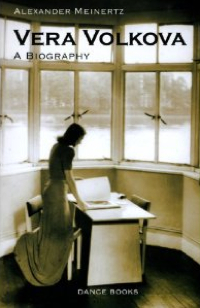 [Extracts Vera Volkova: A Biography, pp41-5: In 1929 Vera Volkova, a 24-year-old ballet soloist in Leningrad, decided to quit Stalin’s Russia under cover of an engagement to dance in China.]
[Extracts Vera Volkova: A Biography, pp41-5: In 1929 Vera Volkova, a 24-year-old ballet soloist in Leningrad, decided to quit Stalin’s Russia under cover of an engagement to dance in China.]
Volkova’s long and solitary journey began on a Tuesday. All her family came to see her off at Leningrad’s Moscow Station. The train to Manchuria left at 12.37, stopped in Sverdlovsk three days later, and arrived at Harbin the following Friday at 13.12. In 1929 the journey, which Volkova had already made twice previously, took 236 hours and 35 minutes, not quite 10 days.
There was a dining car on the train, and it was possible to buy supplies at the stations it stopped at on the way, but passengers usually brought their own food with them for the interminable journey. It wound from European Russia southwards past Moscow, eastwards past the Ural Mountains and across the Siberian plains to Asia.
Harbin had for a long time held a special status as Chinese territory under Russian administration, and had become a gathering place for White Russians. Almost a third of Harbin’s 100,000 inhabitants were Russians, including a Russian regiment.
It was almost always winter in Harbin. Temperatures easily dropped to a numbing -30 degrees at night, and the Black Dragon River froze solid to a depth of 12 feet. The horizon was dominated by the dome of Saint Sophia, the Russian Byzantine cathedral. The town’s Russian quarter had Russian street names and cabs instead of rickshaws, while the Japanese quarter was characterised by trade, grain mills and the notorious Happy Villas where little boys and girls were sold in prostitution. [...]
The majority of the Russian emigrants who passed through the town on their way to the USA and Europe were members of the old aristocracy, professional classes and intelligentsia. They brought with them a level of culture and a taste for entertainment that made Harbin a centre for music and drama, with a nine-month theatre season, a symphony orchestra and a ballet troupe. [...]
Volkova, who had already danced with the Harbin troupe in 1925 and 1926, joined the company once more and went with them on a year-long Southeast Asian tour to Beijing, Singapore and Manila. In Shanghai, the last stop before returning to the Soviet Union, Volkova and Toropov abandoned the troupe. A third dancer, Georgi Goncharov, who was originally from Moscow, also defected. All three had hopes of somehow getting to Europe, where they would join Serge Diaghilev’s Ballets Russes. [...]
The three Russian dancers in Shanghai were known as the Olympic Trio [...] When [their] engagement at the Hotel Majestic came to an end, Volkova found a job in a dress shop to support herself and her family. Goncharov started teaching: and when Volkova visitied one of his classes one day, she made a great impression on one of his pupils, Peggy Hookham. Eleven-year-old Peggy was later to become Margot Fonteyn, Vera Volkova’s most illustrious pupil.
- Vera Volkova: A Biography by Alexander Meinertz (Dance Books 2007)
3. What are you taking with you this summer to read?
This summer I am taking two books with me. La inteligencia fracasada (The Failed Intelligence) by José Antonio Marina, a Spanish philosopher that reflects on the reasons why intelligent people and intelligent nations manage to jeopardise themselves. And The Rest is Noise by Alex Ross. A friend just gave it to me and, as it is a huge book, I intend to go for it on vacations.
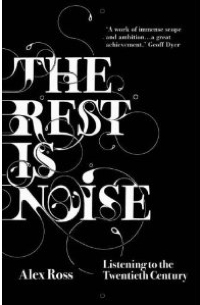 [Extracts The Rest is Noise, pp 480-1: chapter: “Beethoven Was Wrong”]
[Extracts The Rest is Noise, pp 480-1: chapter: “Beethoven Was Wrong”]
Harry Partch, the [other] great West Coast nonconformist of the twenties and thirties, wanted to "find a way outside" - to jettison the entire discourse of European music as it had been practised since at least the time of Bach.
Partch was a true child of the Wild West. He spent much of his childhood in the railway outpost of Benson, Arizona, where his father was a government inspector. According to Bob Gilmore’s biography, young Harry caught glimpses of old-school outlaws on the edge of town. Moving to Los Angeles in 1919, Partch studied at the University of Southern California and made money as a movie-house pianist. Stylish, handsome, and gay - homosexuality is a common thread among composers of this time and place - Partch fell in love with a struggling actor named Ramón Samaniego, whom he met when both men were ushers at the Los Angeles Philharmonic. Samaniego ended the affair shortly after changing his name to Ramon Novarro and finding world fame as a silent-movie idol. That experience apparently cemented Partch’s determination to reject the mainstream in favor of the companionship of outcasts.
One day Partch asked himself why there are 12 notes in an octave, and couldn’t find a satisfactory answer. He buried himself in a study of the history of tuning, paying particular attention to Helmholtz’s On the Sensations of Tone. He emerged with the conviction that the modern Western system of equal-tempered tuning had to go. In its place, Partch would revive the tuning principles of the ancient Greeks, who, at least in theory, derived all musical pitches from the clean integer ratios of the natural harmonic series.
To this end, Partch invented a scale made up not of 12 notes but of 43. Extant instruments were incapable of producing such microtonal shadings, so Partch invented his own; he started by building an Adapted Viola and eventually fashioned an entire private orchestra of bowed, plucked and keyboard instruments, together with Cloud-Chamber Bowls (Pyrex carboys obtained from the Berkeley Radiation Laboratory), the Kithara (modeled on a harp-like instrument seen on Greek vases), and the awesome Marimba Eroica (whose lowest notes boom forth from five-foot-high blocks). [...]
On a trip to Europe in the early thirties, Partch aroused the interest of William Butler Yeats, who watched as the young American composer chanted Psalm 137, “By the Waters of Babylon”, while sawing on the Adapted Viola. Yeats was charmed, but the musical establishments of Europe and America ignored or mocked Partch’s ideas.
- The Rest is Noise: Listening to the 20th Century by Alex Ross (Fourth Estate 2008)
- theartsdesk Q&A with Rojo: Tamara Rojo's Diary
- Alex Ross's website
- Tamara Rojo dances in The Royal Ballet's autumn season at The Royal Opera House Balanchine's Theme and Variations, 14 & 30 October, MacMillan's Winter Dreams 18 & 28 October and Ashton's Cinderella 3, 9 & 13 December
- My Summer Reading: other guests include songwriter Tom Russell, theatre designer Tobias Hoheisel, sculptor Cornelia Parker

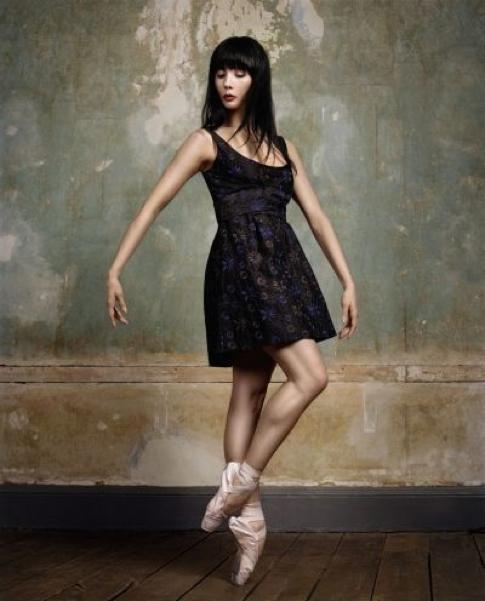


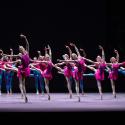

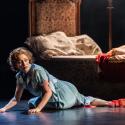


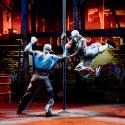



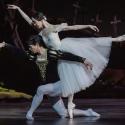
Add comment